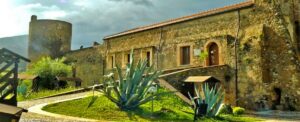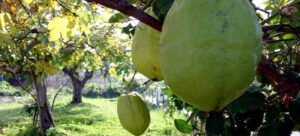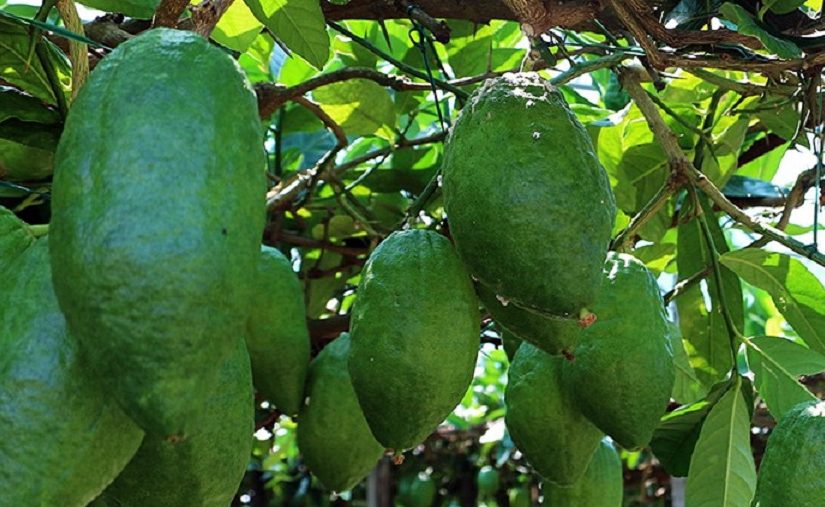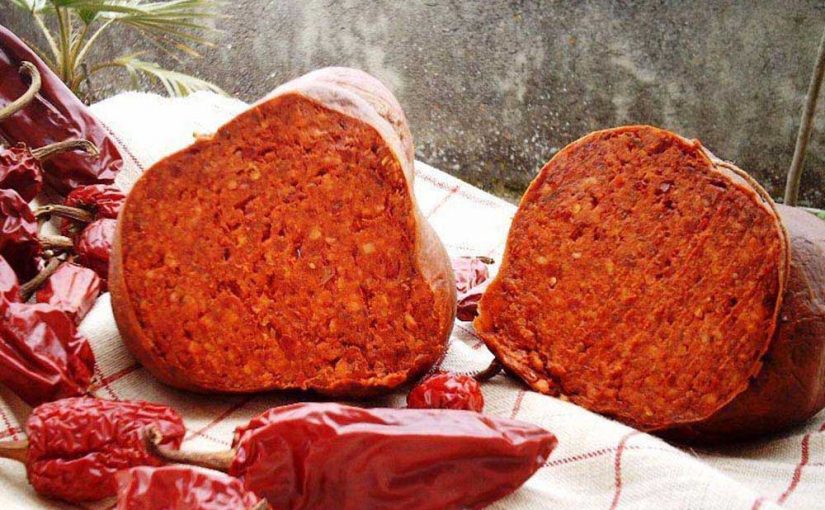8.4.2018
The Diamante citron is a variety of citron named after the town of Diamante, and there is a museum, located in such town, in the province of Cosenza, Calabria, on the south-western coast of Italy, dedicated to preservation of all the tradition of such cultivation.
This fruit has a pluri-millenary history, given that the same Bible mentions this variety, sometimes called the “Calabria Esrog”. “Esrog” is the Ashkenazi transliteration of the Hebrew name for citron.

The connection with Israel is not casual.
In the Old Testament, Leviticus 23:40 makes reference to the fruit of a beautiful tree, or Perì ‘etz adar in Hebrew: “On the first day you shall take the fruit of majestic trees, branches of palm trees, boughs of leafy trees, and willows of the brook; and you shall rejoice before the Lord your God for seven days.”
The Talmudic tradition denotes the citron or Etrog as the fruit described in this verse. Thus, the citrus has been integral to Jewish celebrations for a very, very long time. The fruit is one the four fruits used in the cerimony of the “Feast of the Tabernacles”, the week-long festival (also called “Sukkot”) which celebrates the unity of the Jewish people and the biblical account of their escape from slavery in ancient Egypt to the promised land via 40 years in the desert.
Historically and for centuries, the farmers of the place have grown citrons that are considered among the best in the world. However, these citrons are among the most requested as etrogim for the festival of Sukkot, – in Israel.
This way, during the summer, several rabbis from all over the world move to the coast of Diamante to harvest, personally, the best fruits and send them to Jewish communities in the US, Israel, Russia, Canada, UK and the rest of the world.
In any case, the rabbis are never considered foreigners in this place, they are very familiar to local people. This is the reason why farmers are aware of the kashrut requirements.
The tradition says the cultivation was introduced by the same Jews, living here for centuries, since the “Diaspora” (70 D.C.) or even before in the third century B.C.. A community of such Calabrian Jews has survived in Rome continuously since then but Jews were expelled from Calabria in the first half of the 16th Century as Spanish rule brought the anti-Semitism of the inquisition to southern Italy.

The community was destroyed but they left many markers, including the Eastern method of farming.
Calabria’s citrons used to reach Jewish communities worldwide via wholesalers in Genoa — until some curious rabbis visited Calabria in the 1950s. Afterwards, the commerce re-started.
THE TERRITORY
Citron fields are it the background of San Michele Castle. These etrogim have been part of these lands for 2,000 years, given that, as said, the tradition tells us that they were brought here by Jews who established themselves in the area.
Diamante’s coast features a unique microclimate, where the warm air from the sea meets the cold air from the mountains, creating the ideal habitat for the delicate citron trees. Further, the region’s friable soil is very suitable for the species’s short roots.
The trees usually flower in June, and the fruit is ripe by the end of July, when farmers, rabbis and etrog merchants choose, cut and pack away the choicest ones.
While there are at least 12 varieties of citron that are kosher for Sukkot use, including numerous strains from Israel, it is a centuries-old Chabad-Lubavitch custom to make the blessing on one grown specifically in Calabria.
The Calabria etrog is often called a Yanover etrog—“Yanova” being the Yiddish expression for “Genoa”, from which the fruits were shipped by Jewish merchants for centuries.
The etrog-growing region in northern Calabria is enveloped between the Tyrrhenian Sea on one side and mountains on the other. Today, citron cultivation takes place in the Riviera dei Cedri, the area surrounding the town of Santa Maria del Cedro.

The Cedro della Riviera dei Cedri, or Calabria citron, grows nowhere else in the world but a portion of this southern coastal region of Italy.
The market became far more lucrative for the farmers when Jewish merchants began paying per single fruit (etrog). Over the years, small farms have mostly disappeared, making way for larger industrial operations of a few hundred trees. Although quality citrons deemed kosher are sold at a good price by farmers, the work is laborious, and it is precisely the ungrafted trees that can suffer the most during the year’s frost.
Citron growing dwindled generally but survived along the Riviera dei Cedri thanks to the favourable coastal micro-climate.
THE HARVEST OF THE RABBIS
Byron and D’Annunzio celebrated the citron in Calabria, but it was only saved from extinction, thanks to the Jewish tradition.
A Jewish delegation comes from Israel to Santa Maria del Cedro every year between July and August to choose the best fruit to be used in the holiday for the Jewish community.
Once the good fruit is found, the rabbis shows it to the worker who cuts it off leaving a piece of the stalk. Then the boxes are sealed and sent to the Lamezia Terme International Airport with a final destination Tel Aviv.
To be deemed kosher, an etrog cannot be grown on a tree that has been grafted (in order to defend the fruits from frost), which presents many difficulties for the citron farmer. In itself, the citron tree is weak, yet when grafted with the rootstock of another citrus tree, it is able to survive a tougher environment and produce genetically indistinguishable etrogim. As beautiful as they may be, these fruits are not kosher and cannot be used for the Jewish holiday.
FEATURES
The citron (citrus medica, botanical name) is a large, fragrant citrus fruit with a thick rind. Its center pulp is quite small and the wide pith is edible and not bitter like other citruses. In Italian, the word cedro means both citron and cedar tree, which may be confusing for those already familiar with the latter.
Traditionally, the principal culinary usage of the fruit has been in candied form, such as found in fruitcakes or the Christmas panettone. A the contrary, the citrons deemed kosher, an etrog, must not be on a plant that has been grafted. The fruit must be healthy, of a nice conical shape, green in color and with the crown intact.
Citrons sell for about 10 Euros apiece and inspectors usually examine between 10 and 100 individual pieces of fruit for each Etrog selected. Particularly beautiful and perfectly proportioned fruit can sell for hundreds of dollars.
THE REMAINING FRUIT
After the selection of the Etrog, the remaining fruit is left on the vine to mature and is then gathered for food products. Cedro candito or candied citron is the most common use.
The Diamante citrons are halved and placed in a brine solution in barrels for 69 days. At the point the rind takes on a crystalline appearance, the citron are removed and seeded. They are then placed in fresh water for several days to take the salt out. Finally, the fruit undergoes the candied phase in a sugar and water solution.
Other little gems from the Riviera of the Citron are destined for artisanal shops that prepare pastry. The delicate flavor of citron gelato or a pastry incorporating citron extract, the tang of citron marmalade or the fragrant sensation of the candied bits is routine on the Citron Riviera. The novel citrus is also featured in numerous savory dishes at local restaurants, in which chefs experiment with this ancient fruit to create new offerings for an ever-curious clientele.
In addition to candied fruit, the citron has inspired a host of edible and very drinkable creations, such as marmalade, syrup, liquors, extracts and cookies.
On top of the lovely flavor of the citron, the fruit’s health properties have been recognized for millennium, such as with regard to stomachaches, the gout, and also as a detoxifying and cleansing agent. The citron is widely used in perfume and cosmetics, as well.


